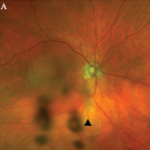(Reuters Health)—Symptoms that patients describe to doctors may not always be documented in electronic medical records, a small U.S. study suggests.
To test out how well the records match reality, researchers compared symptoms that 162 patients checked off on paper-based questionnaires with the information entered in patients’ electronic charts at eye clinics.
Roughly one-third of the time, data on blurry vision from the paper questionnaires didn’t match the electronic records, researchers report in JAMA Ophthalmology online Jan. 26. Symptom information also didn’t match for glare 48% of the time and was discordant in 27% of cases for pain and 25% for redness.
“Because the electronic health record allows researchers, payers and administrators to extract information from the medical record in a way that has never been previously possible, the implications of capturing patient data in the most accurate way becomes much more imperative,” said study co-author Dr. Paula Anne Newman-Casey, an ophthalmologist at the University of Michigan’s Kellogg Eye Center in Ann Arbor.
“The data captured in the electronic health record, if it is highly accurate, can be used to improve the quality of care that we deliver in a way that data captured on disparate paper charts never made possible,” Newman-Casey added by email.
In theory, the promise of electronic health records is that they can help improve the quality of care and lower costs in part by reducing room for errors. Most U.S. doctors and hospitals now use electronic records, though paper remains common for patient symptom questionnaires.
For the study, researchers examined paper copies of eye symptom questionnaires completed by patients visiting eye clinics between October 2015 and January 2016.
Patients rated the severity of common eye issues within the previous week.
Blurry vision was the most common complaint, but when patients reported blurry vision on the questionnaires, the electronic health record correctly noted this in 60 cases but failed to include it in 25 cases.
For patients who didn’t report blurry vision, the electronic records accurately noted this in 26 cases but mistakenly identified this as a problem for 29 patients.
Mismatches were also common for redness, pain, glare, itching, gritty sensation and sensitivity to light. More often than not, the error involved electronic records failing to capture symptoms patients noted on the paper questionnaires.
The study is small and only included patients within a single clinic system, the authors note.
Still, the results suggest that electronic health records may not always be reliable tools for clinicians treating patients or for researchers mining data, the authors conclude.
When patient symptoms are missing from electronic records, it can also prompt clinicians to go in the wrong direction looking for a diagnosis and delay patients getting the care they actually need, Dr. Christina Weng of the Cullen Eye Institute and Baylor College of Medicine in Houston writes in an accompanying editorial.
“Data accuracy in patient medical records is absolutely critical,” Weng said by email.
“Documented signs and symptoms play an important role in efficiently steering providers towards the correct diagnosis and treatment, and medical records also serve as a means of communication between members of a patient’s healthcare team,” Weng added. “Any inaccuracies in the record could potentially threaten or delay patient care.”
SOURCES
Valikodath NG, Newman-Casey PA, Lee PP, et al. Agreement of ocular symptom reporting between patient-reported outcomes and medical records. JAMA Ophthalmol. 2017 Jan 26. doi:10.1001/jamaophthalmol.2016.5551.
Weng CY. Data accuracy in electronic medical record documentation. JAMA Ophthalmol. 2017 Jan 26. doi:10.1001/jamaophthalmol.2016.5562.
